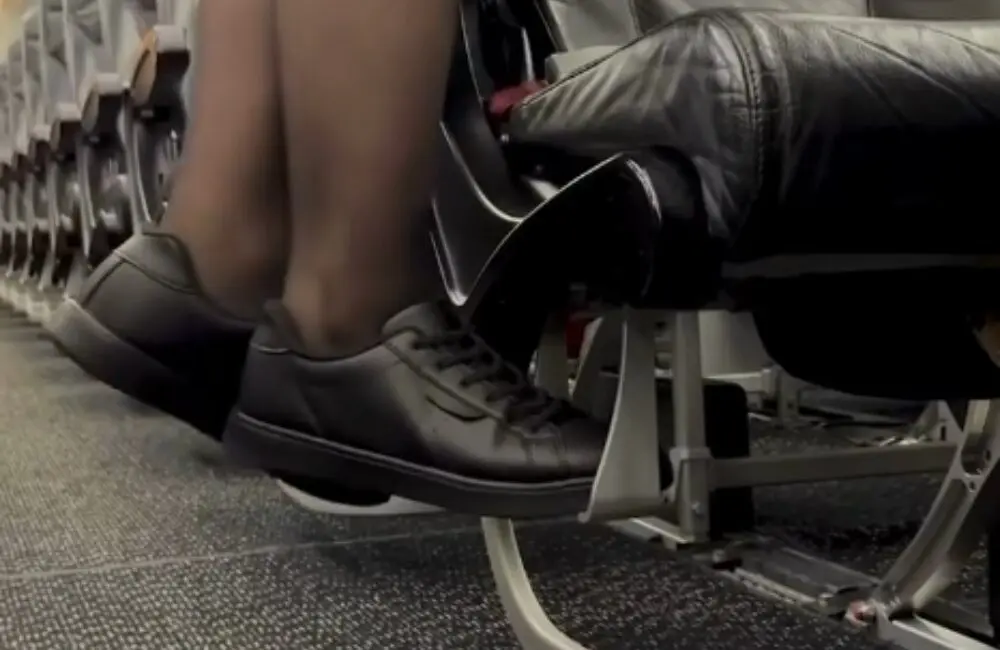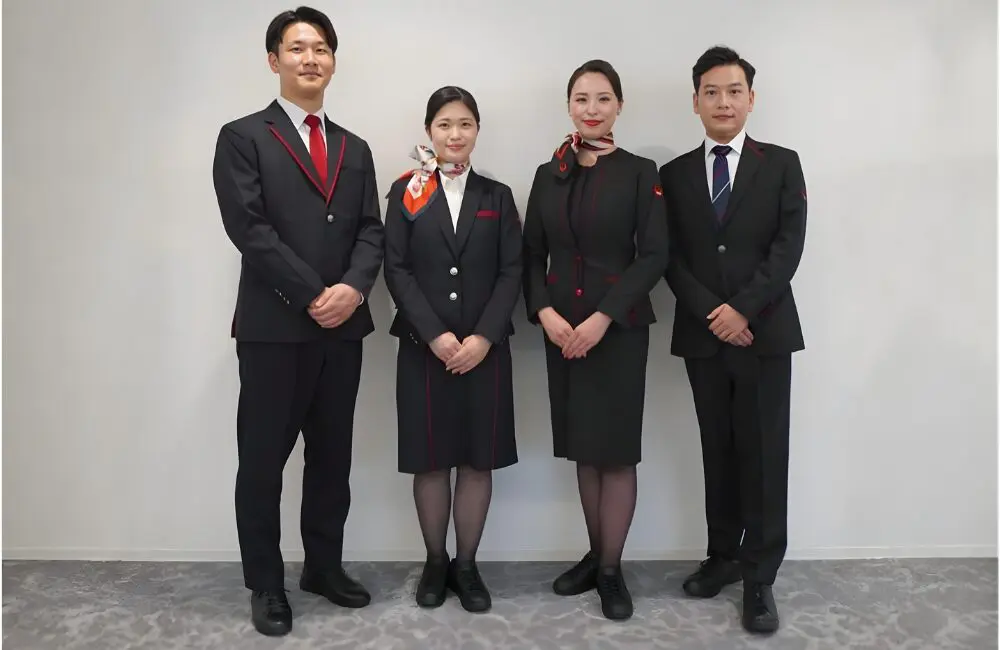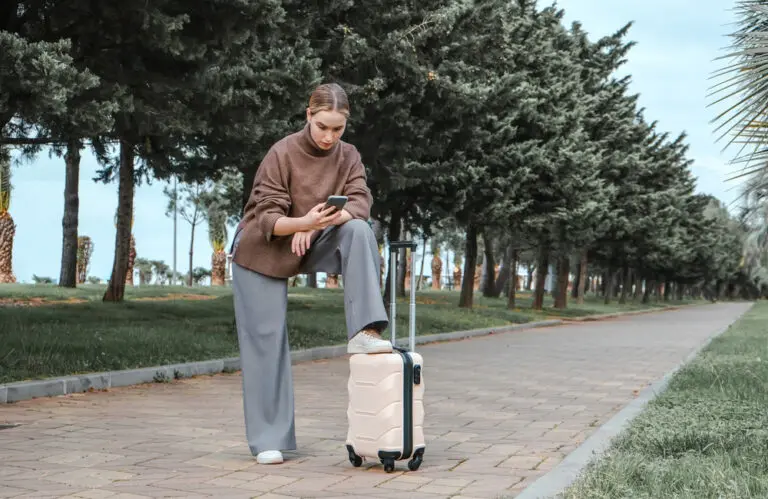Japan Airlines (JAL) has ended the requirement for heels for female employees and allowed cabin crew and airport service teams to wear black sneakers, effective immediately. The policy applies across six JAL Group airlines and covers around 14,000 airport staff across 56 domestic and 40 international airports. Until now, uniform rules restricted footwear to black leather shoes, heels or pumps.
The airline frames the update as a practical change driven by operational demands. Cabin crew and airport staff spend long hours standing, walking terminals, and managing high-mobility service roles. JAL states that sneakers will reduce physical strain and support more consistent service performance during long shifts.
Earlier uniform changes, such as open-collar shirts and fan-equipped vests for summer operations, signalled the same direction.
How the new footwear option applies across the JAL Group
The policy covers employees across JAL, J-AIR, Japan Air Commuter (JAC), Hokkaido Air System (HAC), Japan Transocean Air (JTA) and Ryukyu Air Commuter (RAC). It also includes staff at outsourced and partner-operated airport stations. This creates a uniform standard across a network that spans major domestic hubs and international gateways in Asia, Oceania, Europe and North America.
JAL says the group-wide adoption standardises expectations across multiple brands and operational roles. The airline notes that footwear affects mobility and fatigue management during long shifts.
Industry reporting across Asia-Pacific also shows airlines linking uniform updates to wider workforce sustainability planning.
Why JAL revised its footwear rules
JAL highlights the physical demands of long shifts as the primary driver. Crew complete pre-flight checks, cabin resets and full service cycles. Airport staff move repeatedly between service counters, boarding gates and airside zones. Feedback indicated that traditional footwear increased fatigue and contributed to strain during peak operations.
The airline positions the update within a broader commitment to strengthening the staff experience. JAL links improved comfort to stronger service consistency, smoother peak-period operations and a better foundation for meeting passenger expectations.

It also connects the change to its safety and sustainability messaging, noting that well-supported staff contribute to stable, resilient frontline performance across the network.
Ending required heels for female staff
Although JAL’s official documentation does not gender the policy, the change ends a long-standing expectation that female stadd wear heels or pumps under the previous uniform standard. This aligns the airline with growing moves across global aviation to remove gendered uniform requirements that create physical strain.
Ending mandatory heels resolves a clear operational issue. Staff working on hard floors for extended periods reported long-term impacts on feet, knees and backs. In roles where movement is constant and time on task is high, footwear restrictions had a direct effect on wellbeing and performance.
The Female Quotient publicly welcomed the shift, emphasising the long-term strain caused by restrictive footwear and noting that staff had raised these concerns for more than a decade.
The organisation stated that the removal of mandatory heels shows how listening to women’s needs strengthens the workplace for all employees.
While JAL does not present the update as gender-specific, The Female Quotient’s stance reflects a global conversation about expectations placed on women in aviation, retail and hospitality roles requiring extended mobility.
A global shift toward uniform modernisation
Airlines across major markets are updating uniforms to address heat, movement and long-duration shift patterns. Several carriers have introduced lighter fabrics, sneaker options, seasonal uniform allowances and revised grooming policies.

Delta Air Lines recently updated its uniform program, stating that every Distinctly Delta piece is designed for comfort and performance across real-world conditions, from ground crews working in extreme weather to flight attendants crossing climates in a single shift.
Allowing sneakers is therefore part of a structural shift: aligning uniform design with real job conditions and reducing strain that affects long-term workforce sustainability. For an airline of JAL’s scale, these micro-level changes shape the day-to-day experience of thousands of employees and the service outcomes passengers see on the ground and in the air.
KARRYON UNPACKS: Uniform reform is emerging as a workforce strategy as airlines balance heat, mobility and retention across complex operational networks.






